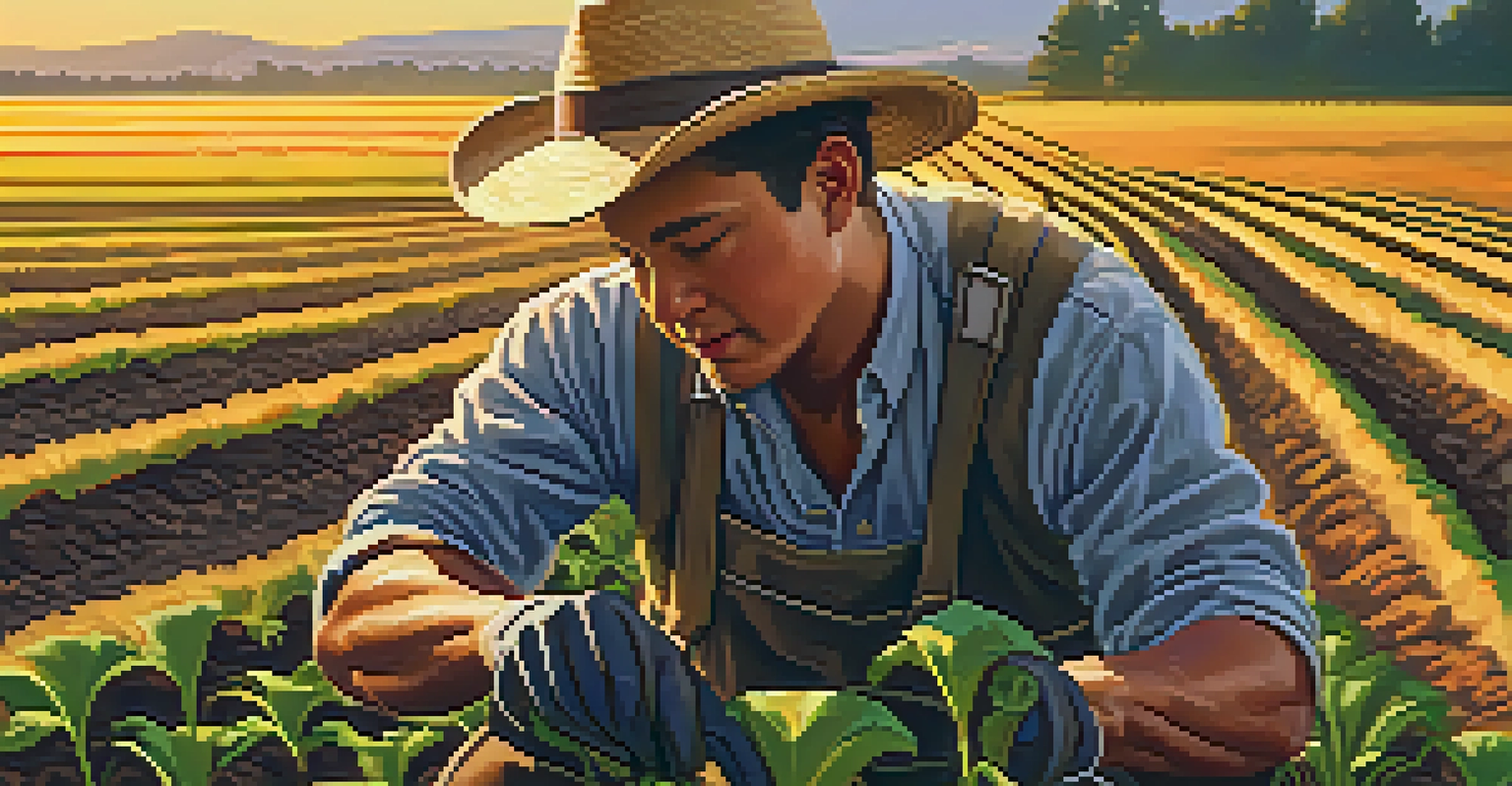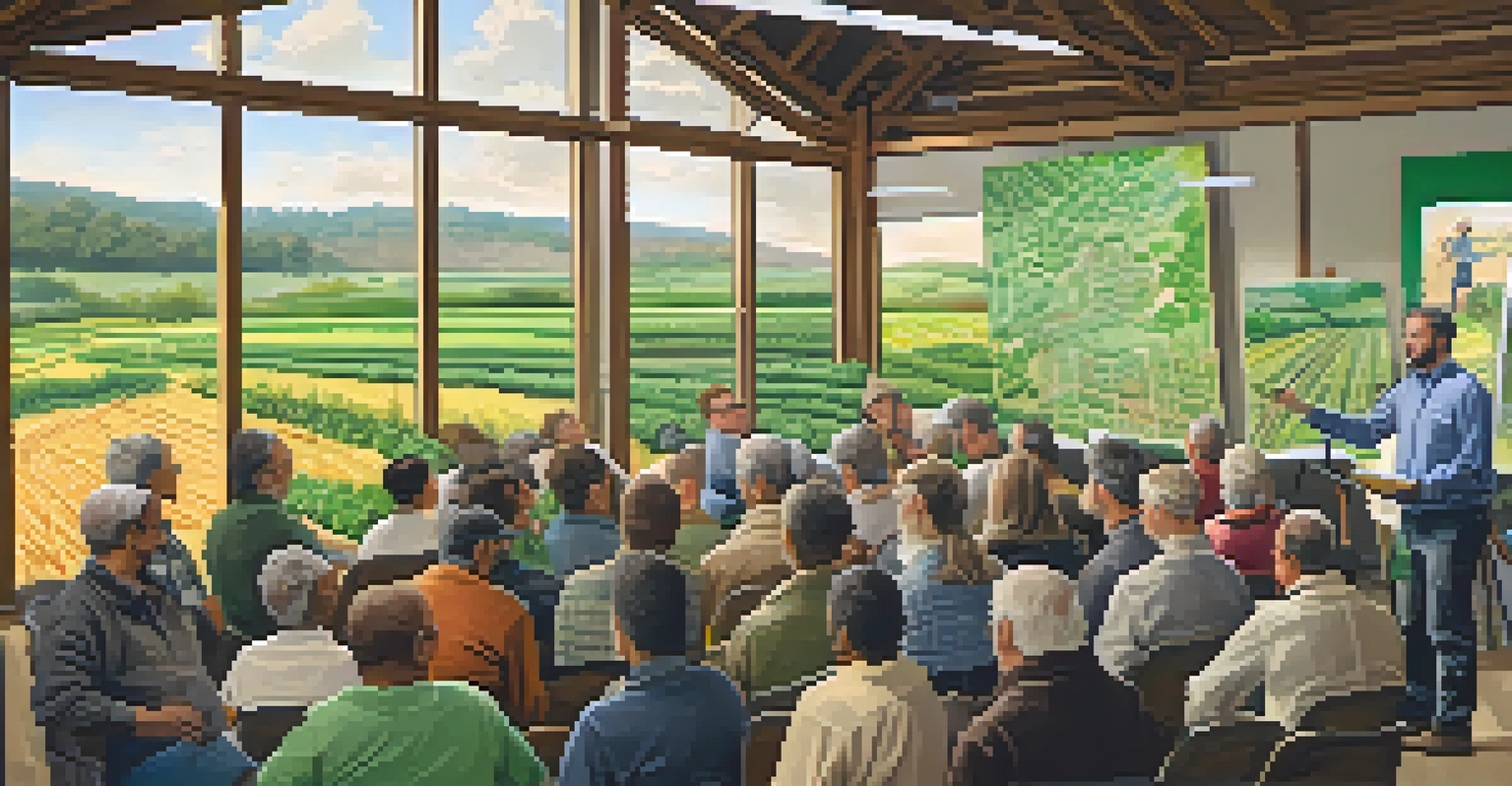The Interplay of Climate and Agriculture in Utah

Understanding Utah's Unique Climate and Geography
Utah's climate is characterized by its arid landscapes and diverse elevations, which create distinct agricultural zones. The state experiences a semi-arid climate, with hot summers and cold winters, which can significantly impact crop choices and farming practices. Understanding these climatic conditions is essential for farmers to select the right crops and implement effective irrigation strategies.
In the face of climate change, agriculture must adapt to ensure food security and sustainability for future generations.
The mountainous regions of Utah contribute to varying microclimates, where factors like elevation and proximity to bodies of water play a vital role in agriculture. For instance, areas near the Great Salt Lake benefit from slightly more moisture, making them more suitable for specific crops. These geographical nuances mean that farmers must carefully consider their local climate when planning their agricultural endeavors.
Moreover, the interplay between climate and topography influences soil types across the state. Different soils have varying capacities for retaining moisture and nutrients, which directly affects crop yields. Thus, understanding the unique combination of climate and geography is crucial for optimizing agricultural productivity in Utah.
The Impact of Drought on Utah's Agriculture
Drought is a recurring challenge for Utah's farmers, often leading to water shortages that threaten crop yields. With climate change intensifying these drought conditions, farmers must adapt their practices to ensure sustainability. This includes implementing water-efficient irrigation systems and exploring drought-resistant crop varieties to mitigate the impact of reduced water availability.

Farmers in Utah have increasingly turned to innovative solutions like drip irrigation, which delivers water directly to the plant roots, minimizing waste. This method not only conserves water but also improves plant health and productivity. Such adaptations are essential for maintaining agricultural viability in a state where water scarcity is a pressing concern.
Drought Challenges Utah Farmers
Utah's farmers face recurrent droughts that threaten crop yields, prompting the need for water-efficient practices and drought-resistant crops.
Moreover, drought conditions can also lead to economic challenges for farmers, as reduced crop yields can impact income and job stability in rural communities. As a result, addressing the issue of drought through education and resource management is crucial for the state's agricultural future.
Climate Change: A Growing Concern for Farmers
Climate change poses significant challenges for Utah's agricultural sector, with shifting weather patterns affecting everything from planting schedules to pest populations. Farmers are increasingly aware that rising temperatures and unpredictable weather can disrupt traditional farming practices. This has prompted many to seek out adaptive strategies to ensure their crops can thrive in changing conditions.
The farmer has to be an optimist or he wouldn’t still be a farmer.
For instance, farmers are experimenting with new crop varieties better suited to withstand heat stress and drought. This proactive approach not only helps in maintaining productivity but also supports the long-term sustainability of Utah’s agriculture. Education and research into climate-resilient farming practices are becoming vital components of agricultural planning.
In addition, farmers are collaborating with universities and agricultural organizations to share knowledge and resources. By working together, they can develop innovative solutions to combat the adverse effects of climate change, ensuring that Utah's agricultural legacy continues for future generations.
Water Management Strategies in Agriculture
Effective water management is crucial for agriculture in Utah, especially given the state's limited water resources. Farmers must be strategic in their approach to irrigation, utilizing techniques that maximize efficiency. This includes using technology such as soil moisture sensors and weather forecasting tools to optimize irrigation schedules.
Moreover, the implementation of water conservation practices, such as rainwater harvesting and contour farming, can significantly benefit Utah's agricultural landscape. These methods help to capture and utilize available water more effectively, reducing reliance on traditional water sources. Such sustainable practices are essential for maintaining agricultural productivity in the face of water scarcity.
Climate Change Affects Agriculture
Rising temperatures and unpredictable weather patterns due to climate change require farmers to adapt their practices for sustainable productivity.
Collaborative efforts among farmers, government agencies, and conservation organizations are also critical in promoting effective water management. By sharing best practices and resources, the agricultural community can work towards solutions that benefit both the environment and crop yields.
Crop Selection and Adaptation to Climate
Choosing the right crops is a fundamental aspect of successful farming in Utah, especially as climate conditions evolve. Farmers must consider factors like heat tolerance, drought resistance, and market demand when selecting their crops. It's a balancing act that requires both knowledge and adaptability to changing environmental conditions.
For example, many farmers are exploring alternative crops such as quinoa and other grains that are more resilient to arid conditions than traditional crops like corn or wheat. This shift not only supports sustainability but also opens up new market opportunities. As consumer preferences evolve, diversifying crop selection can help farmers remain competitive.
Additionally, ongoing research into crop genetics and breeding programs is providing farmers with access to improved varieties that can withstand climate stressors. By staying informed and open to innovation, Utah's farmers can better prepare for the future, ensuring their operations remain viable.
The Role of Technology in Modern Agriculture
Technology plays a pivotal role in transforming agriculture in Utah, especially in the context of climate challenges. Precision agriculture tools, such as GPS-guided equipment and drones, are helping farmers monitor their fields more effectively. These technologies enable farmers to make data-driven decisions that can optimize resource use and enhance crop management.
Moreover, innovations in agricultural technology, such as automated irrigation systems, allow for more precise water application. This not only conserves water but also improves crop health by ensuring plants receive the right amount of moisture at the right time. Embracing these advancements is critical for farmers looking to thrive in an increasingly unpredictable climate.
Technology Enhances Farming Efficiency
Innovative technologies, such as precision agriculture and automated irrigation systems, are crucial for optimizing resource use and crop management in Utah.
Additionally, the integration of data analytics into farming practices provides insights into weather patterns, soil conditions, and pest management. By leveraging this information, farmers can anticipate challenges and respond proactively, ultimately leading to more sustainable agricultural practices.
Community and Education: Building a Sustainable Future
Building a sustainable agricultural future in Utah requires a strong sense of community and collaboration among farmers, researchers, and policymakers. Educational programs that focus on sustainable practices and resilience to climate change are vital in empowering farmers to adapt. Workshops and seminars provide valuable information on the latest technologies and methods available.
Community support networks also play a crucial role, allowing farmers to share experiences and learn from one another. These connections foster a culture of collaboration, where innovative ideas can flourish, and collective challenges are addressed. By working together, farmers can create a more resilient agricultural sector in Utah.

Furthermore, engaging the next generation of farmers through educational initiatives is essential for ensuring the sustainability of agriculture. By inspiring young people to pursue careers in farming and agricultural sciences, Utah can cultivate a new wave of innovators ready to tackle the challenges posed by climate change.